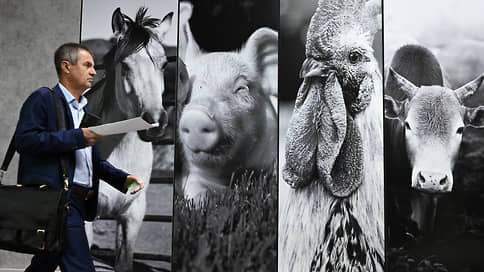The earth loves the bill – Newspaper Kommersant No. 23 (7468) of 02/08/2023
[ad_1]

The government adopted a resolution on maintaining the state register of agricultural land. The system, which should be launched within three months, will be formed on the basis of information from Rosreestr and will be integrated into the large-scale digitalization of the agro-industrial complex that has been unfolding in recent years. With the creation of a new register, the Ministry of Agriculture continues the digital inventory of farmland – as part of it, in 2022, in some regions, maps began to be developed, thanks to which it was possible to involve unused and unaccounted agricultural land into circulation.
The register, the development of which was entrusted to the Ministry of Agriculture, will contain systematized information on the condition and use of agricultural land, follows from government decree No. 154 of February 2, 2023. Among the data that the system accumulates are information about the land plot (disaggregated by area on which crops are grown), indicators of land fertility, information about real estate and land reclamation systems located on the plots. The database will also include information about the actual use of the land (growing crops, horticulture, animal husbandry, etc.) and its efficiency (for example, details of the grain grown on the plot). The filling of the system will be done by Rosreestr, Rosprirodnadzor, Rosselkhoznadzor and Roskosmos, as well as state authorities of the constituent entities of the Russian Federation and owners of land plots – for the latter, entering data will be voluntary in order to stimulate their participation “in obtaining complete and reliable information about agricultural lands,” Kommersant was told ” at the ministry. The data from Rosreestr will be taken as basic information – it is they who will be fixed in the system in case of conflicts with information from other sources. Landowners will be able to receive information about their plots from the register for free – a request form through which this can be done on the public services portal, the Ministry of Agriculture, together with the Ministry of Digital Development, will develop in the next six months.
The register is being created as part of the implementation of the state program for the effective involvement in the circulation of unused agricultural land (their total area in 2021 was estimated at 19.4 million hectares, or 5% of the agrarian land fund of the Russian Federation): by the end of 2023, this program is expected to involve 13.2 million ha of farmland. As part of the same state program, in the summer of 2022, the ministry began to create a federal map-scheme to update data on the state of agricultural land and improve the quality of forecasting and analytics. Then fragments of the scheme were formed in six regions (Tatarstan, Mordovia, Udmurtia, Belgorod, Moscow and Kaliningrad regions). As a result, the Ministry of Agriculture received information with the contours of the borders in relation to 12 million hectares – the data on part of the agricultural land were not previously contained in the unified state register of real estate (EGRN). “That is why many municipalities were not happy with the proposed digitalization: not everyone wants to part with gray schemes for the use of agricultural land,” Deputy Prime Minister Victoria Abramchenko explained (for more details, see Kommersant dated November 29, 2022). In 2023, digital maps should cover 13 more regions. Updated information from them will also be included in the new registry.
It is assumed that the common database will help eliminate the inconsistency of information in various sources, as well as identify lands to be introduced into agricultural circulation. The ministry has been actively engaged in the large-scale digitalization of the agro-industrial complex and linking together the data of organizations subordinate to the Ministry of Agriculture and government bodies over the past few years. In particular, earlier all data related to the supply of crops, from production to processing, were accumulated in the FSIS “Grain” – the creation of a new register summarizing information on agricultural land, this process logically continues.
[ad_2]
Source link






